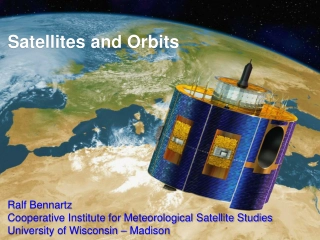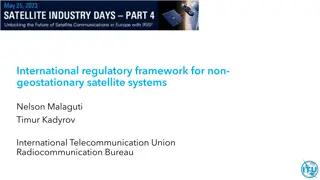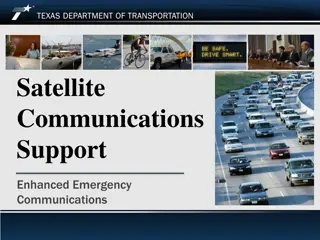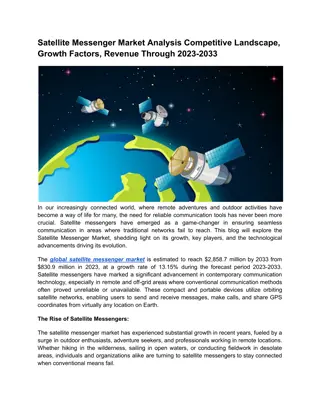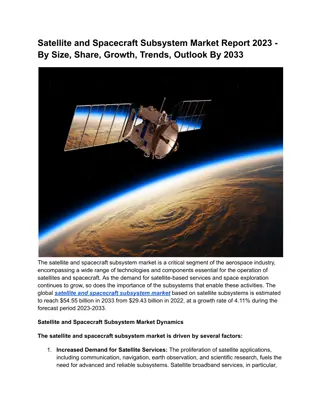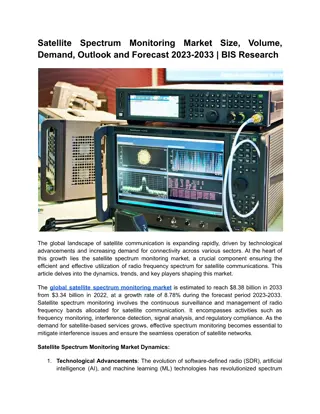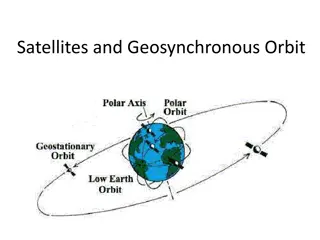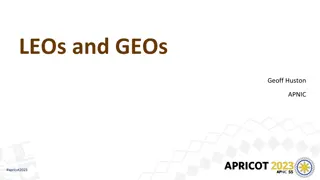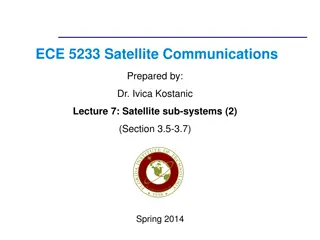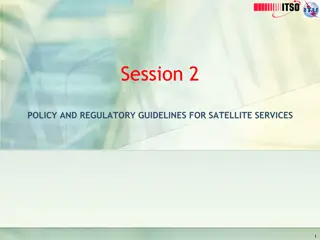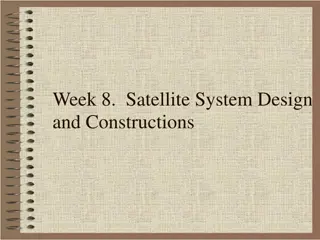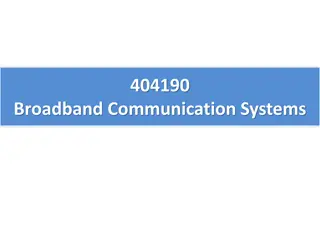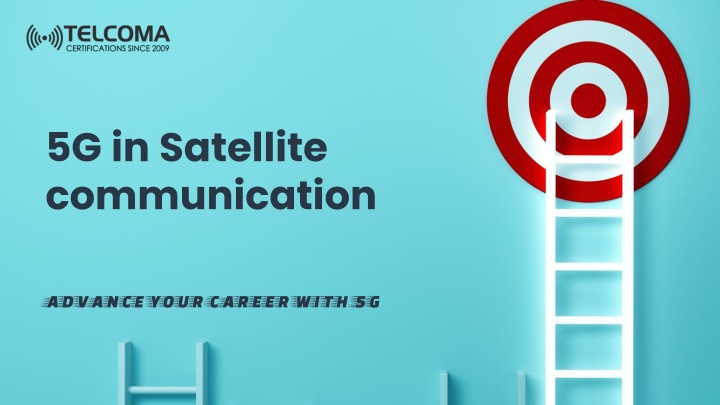
Exploring the Future of 5G Technology and Satellite Communication
Discover the potential impact of 5G technology on satellite communication, including the integration with next-gen satellites for global connectivity. Learn about private LEO satellite constellations and how they are revolutionizing internet services. Explore the role of LEO satellites in extending 5G networks to remote areas and enhancing coverage and integration in smart cities.
Download Presentation

Please find below an Image/Link to download the presentation.
The content on the website is provided AS IS for your information and personal use only. It may not be sold, licensed, or shared on other websites without obtaining consent from the author. If you encounter any issues during the download, it is possible that the publisher has removed the file from their server.
You are allowed to download the files provided on this website for personal or commercial use, subject to the condition that they are used lawfully. All files are the property of their respective owners.
The content on the website is provided AS IS for your information and personal use only. It may not be sold, licensed, or shared on other websites without obtaining consent from the author.
E N D
Presentation Transcript
5G in Satellite Communication With the next generation of satellites - built from 5G architecture - they will integrate with networks to manage connectivity to cars, vessels, airplanes and other IoT devices in remote and rural areas. In future, 5G signals will beam down from space and support our terrestrial 5G infrastructure on earth. In future, there will be space race for satellites, promising to offer customers a seamless wireless experience across the entire globe.
LEO satellites Traditional GEO satellites remain in fixed position relative to any position. Low earth orbit (LEO) satellites are miniaturized , orbiting versions that operate between 500 and 2000 Km above earth s surface. This creates a smaller coverage area so LEO satellites continuously handoff communication signals and traffic.
Private LEO satellites A new space race is emerging among companies to deploy LEO satellite constellations to deliver high speed internet service to emerging markets and business customers. The Kuiper system, it will deliver high throughput , low-latency broadband service to millions of underserved customers. Each of these companies recognizes the potential of private satellite constellations to not only provide internet connectivity to rural areas but also satisfy the global networking services.
Coverage & Integration In a 5G interconnected world, smart cities will utilize ultrafast speeds and low latency to connect everything in it. This requires small 5G towers placed in high traffic areas that demand a lot of bandwidth and have a direct LOS for optimal speed and performance. LEO satellites will play a key part in extending cellular 5G networks to air, sea and other remote areas not covered by small cell networks.
Coverage & Integration For the end-user , satellites offer a seamless extension of 5G services from the city to airplanes, cruise liners and other vehicles in remote locations. IoT sensors and M2M connections on farms and remote worksites like mines can also capitalize on wide coverage areas
Coverage & Integration Integrating satellites with 5G infrastructure improves the QoE of high capacity apps. By intelligently routing and offloading traffic, satellites save valuable spectrum and improve the resilience of each network. In the event of a natural or man-made disaster where 5G infrastructure is damaged, satellite networks can take over and keep the network alive.
Multicast streaming The traditional core market of satellite communication is media broadcast. With the proliferation of mobile devices, media content trends are shifting away from live linear TV broadcasts, to low latency on- demand streaming. Media streaming is one of the key use cases for new satellite technology.
Multicast streaming With the help of 5G-enabled satellites, these immersive experiences can globally transmit higher data rates to support smooth delivery and low latency to mobile devices.
Satellites & IoT To combat on-going security vulnerabilities, devices need constant updates and future 5G devices will require an efficient distribution of data on a large scale. With wide coverage and broadcast capabilities , satellites are well positioned to support IoT. They can offer shared UL connectivity for a massive amount of IoT devices and provide data aggregation.
Backhauling hi-speed services Satellite communication has a deep history in providing secure networks for high-speed and mission critical environments like air navigation systems. With larger constellations and a decrease of E2E delay, satellite networks can supply the required backhaul for high speed services.
Backhauling hi-speed services With the right blend of economies and performance characteristics, satellites can provide additional services to high speed platforms and network platforms that are difficult to manage. Satellites can complement 5G and provide backhaul services, especially in areas where it is difficult to install physical infrastructure.

